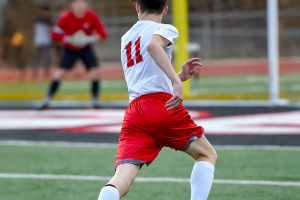If you've ever felt like you're muscling your way up a climbing wall but still burning out halfway through, you're not alone.
Many climbers—especially beginners and intermediates—focus on grip strength alone, forgetting that real progress comes from balanced development of both power and mobility.
Today, let's unpack what it really takes to climb more efficiently, with less fatigue, and more body control.
Why Strength Alone Isn't Enough
Climbers often believe more upper body power is the only key to progress. While pull-ups and fingerboard training are useful, this focus creates an imbalance. Climbing is a full-body sport. Your legs, core, hips, and shoulders need to work as a coordinated system. Flexibility and movement efficiency are just as crucial as strength.
Think about it: elite climbers don't just hang on to the wall—they flow across it. That grace comes from being strong and supple.
1. Build Functional Climbing Strength
Instead of brute strength, focus on functional, climbing-specific exercises that mimic the way your body moves on a wall.
— Pull with control, not speed: Do slow, full-range pull-ups. Add isometric holds halfway through the motion to develop time-under-tension.
— Train unilateral movements: Exercises like one-arm rows or single-leg squats help mimic real climbing scenarios where your weight is distributed unevenly.
— Develop core integration: Hanging leg raises, front levers, or plank-to-pike movements teach your core to connect your upper and lower body—a vital skill when you're heel hooking or stemming between holds.
2. Mobility: The Hidden Climbing Superpower
Mobility is often overlooked, but it separates fluid climbers from those who look stiff on the wall. Better mobility allows you to reach farther, twist deeper, and hold body tension at odd angles.
— Hip mobility: Deep lunges, Cossack squats, and 90-90 stretches help you open your hips to high steps or lateral moves.
— Shoulder and thoracic spine mobility: Use wall slides, thoracic rotations, and resistance bands to increase overhead reach and twist capacity.
— Ankles matter too: Lack of ankle flexibility can affect how you smear or toe-hook. Use calf stretches and ankle mobility drills regularly.
3. Movement Drills to Link Strength and Flexibility
Once you've developed strength and mobility, the real gains come when you train them together. That's where technique drills come in.
— Silent climbing: Practice climbing without making a sound. It forces better body control and efficiency.
— Downclimbing: Climbing back down a route strengthens control and helps you visualize movement patterns in reverse.
— Flagging and drop-knees: These techniques require balance, core strength, and hip mobility—perfect training for dynamic body awareness.
4. Don't Ignore Recovery and Fatigue
Overtraining is real in climbing, especially when you're trying to get stronger fast. Your body needs time to adapt. Recovery isn't passive—it's part of the training.
— Active recovery days: Instead of skipping the gym, mobility flow, or light bouldering on easy routes.
— Sleep and hydration: These two are easy to overlook but deeply affect how your muscles and joints respond to training.
— Trigger point work: Use foam rollers or massage balls on your shoulders, lats, and calves to reduce tightness that limits range of motion.
5. Mental Awareness During Climbing
Your brain is as involved as your biceps. When strength and flexibility are in sync, your mental focus can shift toward movement strategies, breathing, and body positioning.
— Route reading before climbing gives your body a mental map of what to prepare for.
— Breathing in sync with movement reduces fatigue and sharpens your flow.
— Visualization is used by many top climbers before sending difficult routes—imagine how your body will move and balance before touching the wall.
Start Small, But Smart
Don't overhaul your routine overnight. Start with 2–3 functional strength moves and 2–3 mobility drills in your weekly sessions. Over time, layer in climbing-specific movement work.
You'll notice that you're not just stronger—you're more capable. Your body feels lighter, your reach improves, and you recover faster between climbs. The wall becomes less of a fight, more of a dance.
Climb Better, Not Just Harder
If your climbing has plateaued, maybe it's not a lack of effort—but a lack of strategic training. Focusing on the marriage of strength and mobility changes how you move, not just how hard you pull. What's the one thing you've overlooked in your training that could take your climbing to the next level?
Let me know what part of your climbing feels the most limiting—power, flexibility, or movement? I'd love to help you troubleshoot it.


